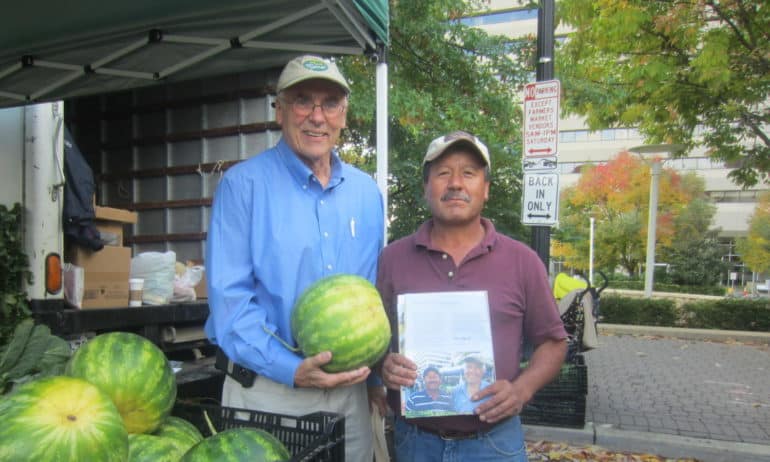 |
| farmers |
“Agrobiodiversity—the edible plant and animal species that feed each and every one of us—holds the key to future food security,” said Ann Tutwiler, Director General of Bioversity International, “But we are failing to protect it, and tap into its potential to transform our food system for the better.”
Bioversity International is a research-for-development organization focused on preserving agricultural and tree biodiversity as a means of improving nutrition security, promoting sustainable agriculture, and adapting to climate change. They are a CGIAR Research Center, part of a global food security research partnership.
Bioversity works with partners in low-income countries to disseminate scientific evidence, management practices, and policies that protect biodiversity. The report focuses on healthy diets (nutrition), production (sustainability), seed systems (food security), and conservation (resilience).
We had the opportunity to discuss the report and agrobiodiversity with Ann Tutwiler, Director General of Bioversity International.
What has led to a global decrease in agrobiodiversity?
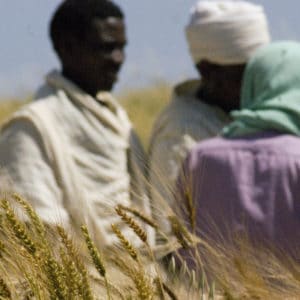
On the consumption side, there is a growing global tendency towards Western diets and processed convenience foods. Diets are based more and more on major cereals, plus sugar and oil. So these now dominate our agricultural production. Of the 30,000-ish plant species that can be used as food, today only three—rice, wheat, and maize—provide half the world’s plant-derived calories and intakes of pulses, fruits, and vegetables are low.
At the same time, the same pressures that are driving the sixth mass extinction of wild biodiversity are also affecting agricultural biodiversity—habitat transformation, deforestation, invasive species, and climate change. They also lead to disruption in pollinators and natural pest control. Loss of wild biodiversity can lead to erosion of genetic diversity (like the wild relatives of crops, which are a valuable source of traits for breeding), which reduces options for breeding new plant varieties better adapted to climate change.
Factor in the policy environment in some countries. When farmers are not allowed to trade local seeds, it also suppresses demand for these seeds. And when farmers and other natural resource managers stop using local materials, we also lose the local knowledge about those species and varieties. Once that knowledge is lost, a vicious cycle of loss is started as the seeds and breeds cannot be optimally used.
Policies for conserving seeds in genebanks and making them available for breeding programmes have tended to focus on staple cereals. Only two percent of global collections are of crop wild relatives and less well-known species.
We should point out though that there is no way yet to accurately measure the decrease in agricultural biodiversity. It is notoriously difficult to measure the exact status of crop and animal genetic diversity. A study in 2014 classified 58 percent of domesticated animal breeds as of unknown risk status. Also for crops, there are huge data gaps—number and distribution of species and their genetic diversity—so it is difficult to determine genetic erosion. One challenge is the richness of the diversity—even if we consider only the 150 to 200 crops commercially cultivated, it is hard to identify, monitor, and conserve it all.
This is one reason why Bioversity is working on an Agrobiodiversity Index and suggests ways to measure the agricultural biodiversity on plates and in markets, in fields, the wild, and genebanks worldwide and track changes in it.
There is a global paradox, where millions go hungry while billions are obese and both groups can suffer from micronutrient deficiencies. What has led to this paradox and how can agrobiodiversity address it? AT: One of the main drivers of malnutrition is poor diet. Diet-related factors are now the number-one risk factor of morbidity and mortality globally, more than tobacco smoke and air pollution. If people ate more plants, in line with standard dietary guidelines, it would have a positive effect on diets and on the environment, reducing global mortality by 6 to 10 percent and food-related greenhouse gas emissions by 29 to 70 percent.
Tapping into the planetary wealth of diverse fruits, vegetables, pulses, and grains, particularly nutrient-dense varieties, can address both overweight and micronutrient deficiencies. We eat food, not micronutrients! For example:
- More healthy options within food groups—expanding the range of fruits, vegetables, whole grains, nuts, seeds, pulses. Biodiversity is recognized as a fundamental principle in recent dietary guidelines like the Mediterranean Diet Pyramid, the Nordic guidelines, and the Brazilian guidelines.
- Important and significant nutritional differences between species. For example, in Bangladesh, although people started eating more fish, their nutritional intake decreased from eating exotic farmed fish rather than nutrient-dense local fish. Then there are species many people have never heard of—Gac, for example, is a fruit from South East Asia with extremely high levels of beta-carotene, which the body converts to vitamin A.
- Important and significant nutritional differences within species. For example, some bananas are orange and contain very high levels of beta-carotene; others are white and contain none. Different varieties of potato can contain between 6 mg and 37 mg of vitamin C.
- Since many less well-known plants, fish, animal, and trees are well adapted to local environments, they can be more tolerant to low inputs or climate fluctuations and so can be selected to provide a portfolio of nutritious foods all year round, integrating small animals, green vegetables, and fruit trees.
- Food has to be accessible, affordable, acceptable, and available. Food biodiversity is often all four.
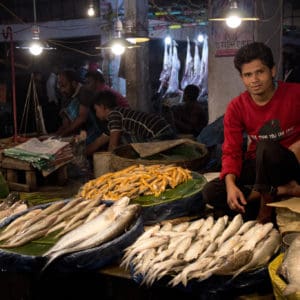
Increasing agrobiodiversity, for instance growing more varieties of wheat, would seem difficult to implement in places like the United States that rely on mass agricultural production and distribution. What can be done to encourage agrobiodiversity in these types of systems?
AT: The general rule is that larger farms are more specialist and this is consistent with the way that intensified, industrial farming has gone over the last 50 years in much of the Western world. There will always be a need for large-scale farms that produce commodities for massive consumption, this is also a part of food security. But there is a risk that using a single variety across vast areas leaves such crops open to attacks by pests and diseases. To counter this, the industry and farmer response is often to use large quantities of pesticides, fungicides, and so on, which is expensive as an input, has a negative impact on environmental factors such as water quality and (wild) biodiversity, and has high fossil fuel inputs. Moving to a more diverse system (and this could be different crops in different seasons, not necessarily different crops in different physical areas) can reduce risks of total loss and reduce risk of pest and disease damage. This can then lead to reduced input costs, reduced greenhouse gas emissions, and reduced environmental impacts.
Now, how does this happen in these kinds of systems? A great deal would need to happen in order to allow this to happen, not least in the increase in extension services (agroecology tends to be knowledge-intensive). To do so would potentially kick-start a revolution in agricultural employment in rich countries. What might drive this? A demand for greater diversity in diets from the public, increased concern over food safety and environmental health, and a general rise in what is being termed ‘sustainable intensification’ (increasing production whilst reducing environmental impacts, in its most simplistic definition). Such approaches might be ideal for incentivization through farmer payments, preferential markets, and tax incentives, for instance.
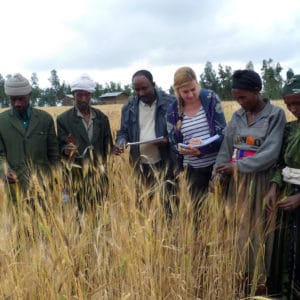
For businesses, diversity makes sense as a strategy to reduce risk. Left unchecked, degraded agrobiodiversity can cause direct production losses that might even be catastrophic. The Irish potato blight, which decimated the two dominant potato varieties in the mid-1800s, is one example. In the 1970s, U.S. maize crop was severely threatened by corn blight, which destroyed almost US$1 billion worth of maize and reduced yields by up to 50 percent in 1978. The crisis was addressed by using blight-resistant genes from wild types of Mexican maize.
Even in and around mass agricultural production, there are many ways to encourage agrobiodiversity, such as encouraging pollinators, natural pest predators, soil biodiversity, and green manure. In Californian rice production near Sacromento, a change to flooding stubble instead of burning it ended up doubling winter wetland habitat at the peak of waterfowl migration. These fields now provide habitat resources for 203 species of wildlife and 9 million migratory waterfowl, with no drop in rice yields.
The USDA Conservation Reserve Program is an example of practices that can work with mass agricultural production. For example, using buffer strips to encourage wild–cultivated interactions on farms, or adding copses of trees within cropping systems.
You bring up quinoa in one of your examples. According to the Whole Grains Council, there are more than 100 types of quinoa, but only three have been commercialized, leading to a loss of biodiversity. In a global market, how can this type of trend be reversed? How can all strains be commercialized and preserved?
AT: Actually, there are thousands, not hundreds! Those that have been commercialized so far tend to satisfy a market for pearly white grains (Quinoa Real). And there are perhaps 15 to 20 varieties that one finds in the national and international markets (not three).
How can the trend be reversed? In Bioversity’s research we use a kind of triage—categorizing grains as marketable, potentially marketable, and non-marketable. The first category takes care of itself. The second category needs market development, and we can explore other product options besides just grains, like the experience we have had making and marketing a milk from a hardy quinoa variety called ‘chullpi.’ For the third category, we have had success with an approach called Payments for Agrobiodiversity Conservation Services (PACS), which is based on the Payments for Ecosystem Services approach. Farmers receive a non-monetary reward for conserving varieties that are disappearing from farms. Rewards can be things like agricultural inputs, machinery, school buildings, and materials. The communities themselves decide which priority species or varieties they are interested in, the conditions for their participation, and how they will share the rewards within the group and among other community members.
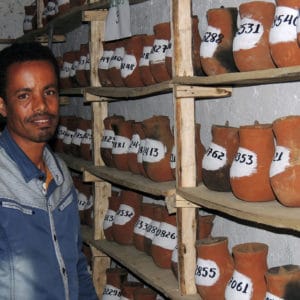
A complementary way to preserve species and varieties that don’t have a clear commercial value in the present, is to collect them in genebanks, some of which can be seedbanks managed at the community level or community seedbanks.
How does intercropping, growing multiple types of crops in close proximity, effect harvest efficiency? Can it be implemented at a large scale and how?
AT: The first thing to be aware of is that intercropping is a pretty broad church. It can take many forms and occurs in a multitude of production systems. For instance, systems can include annual cropping, perennial crops, agroforestry, and aquaculture. Approaches to intercropping can be very diverse, from legumes and green manure (offering a very direct nitrogen application to the soil and other crops, as well as nutrition through the intercropped species, to pollination through habitat provision for pollinators), to mixed polycultures such as rice-fish systems (increased nutrition, natural pest control, organic fertilizer).
In terms of harvesting, if we are talking about different crops in different seasons, then this is unlikely to present a physical or technological obstacle. If they are in the same field, then you have to have a different structure, tall plants and short plants for example. Or they can be in adjacent fields. Bioversity’s research into using bean diversity to reduce pest damage found that having different varieties of bean in adjacent fields reduced pest damage, and of course would be easy to harvest.
So, yes it can be implemented at scale. It’s a question of choosing the right intercropping form that works for what you need.
What is the Agrobiodiversity Index and how do you hope it will make a difference? AT: World hunger is on the rise again. There is likely to be an understandable push towards increasing food production, but we cannot afford a ‘produce at all costs’ mentality. We need to grow food in ways that are sustainable—lower pesticide and fertilizer use, rebuilding soils, providing habitat for pollinators and pest predators. Also we need to make sure that the ‘Produce More’ mentality doesn’t just churn out more empty carbs. We are already in the midst of a malnutrition epidemic.
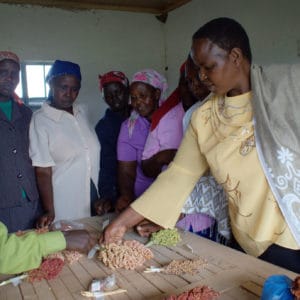
The Index is unique because it looks across consumption and production and conservation. The book pulls together the science behind the index, not looking at diets or production or conservation but diets and production and conservation, which is why we refer to the triple win. Many indicators have been developed in each of the domains of agrobiodiversity—measuring diet diversity, on-farm diversity, supply diversity, and so on—but they usually remain separate and so the potential synergies and trade-offs are invisible.
Starting from the scientific evidence base in the four dimensions described in this book, the Agrobiodiversity Index will bring together agrobiodiversity data in innovative ways to give novel insights, which can help countries and companies identify policy and business levers, and guide public and private investments. It will be launched in mid-2018.
To learn more about the Agrobiodiversity Index, please click here. To read the report ‘Mainstreaming Agrobiodiversity in Sustainable Food Systems,’ please click here.









No comments:
Post a Comment